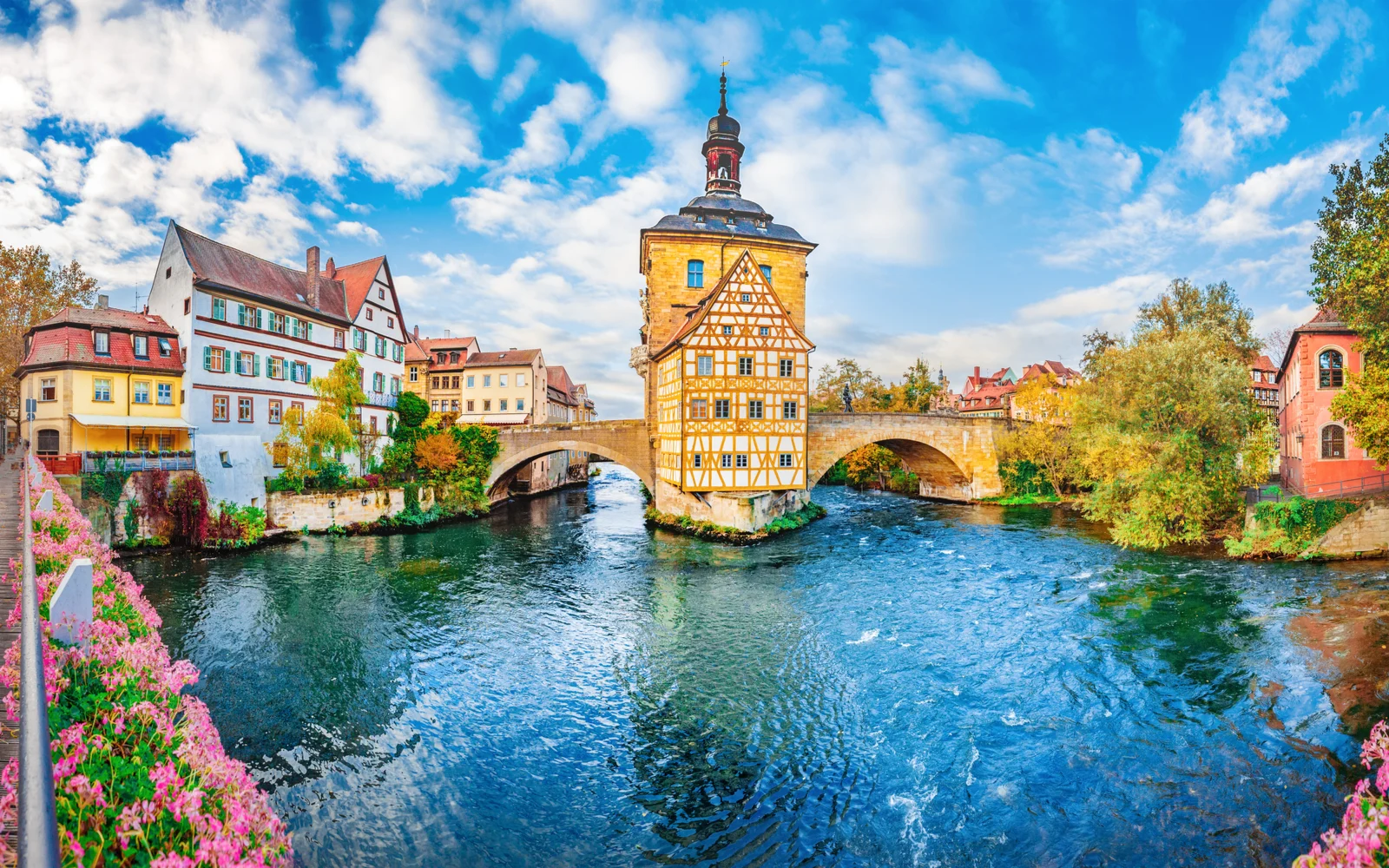What's the best time to visit Germany?
The best time to visit Germany is from August to October, encompassing peak late summer months and early fall. The warm to mild weather is perfect for outdoor activities, beer gardens, and city exploration. Take advantage of world-famous Oktoberfests, German Riviera beaches, historic museums, and blazing autumn foliage this time of year with mild temperatures in the mid-70s.
Gearing up for a trip to Germany and its medieval castles, fascinating architecture, fairytale Bavarian villages, and cutting-edge cities where music venues, restaurants, museums, and shops keep you busy? Figure out the best time to visit Germany to give yourself the gift of Deutschland in its prime.
You’ll be amazed at all the experiences this European country can offer you — especially when you know the right time of year to go. When you can expertly sidestep the months with the worst weather, highest prices, and biggest crowds, you’ll feel like a seasoned German traveler.
Drink and eat your weight in malty beer and sausages at Oktoberfest, explore Berlin, Munich, and Hamburg for some spectacular examples of Gothic, Renaissance, and Baroque architecture, and venture into the Black Forest and step into a Brothers Grimm fairytale.
Get your itinerary in order and learn the perfect time of year to go to Germany with our complete guide. We’ll share the overall best, cheapest, least busy, and worst time to visit along with festivals and events, weather averages, things to do, and average prices on flights and hotels.
From the snow-capped Alps and bustling Berlin to cozy Bavarian villages and welcoming beer gardens in Munich, you’ll feel right at home in Germany. Make sure you’re planning your trip at the right time of year with our tips and suggestions below!
Overall Best Time to Visit Germany
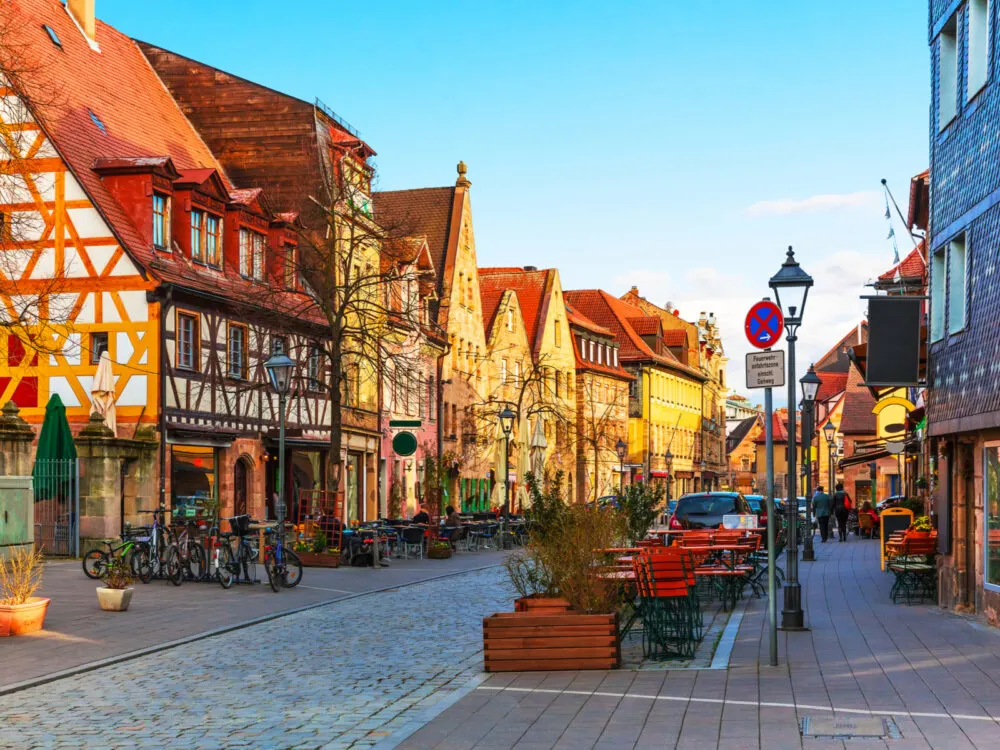
Oleksiy Mark/Shutterstock
The best time to visit Germany is between August and October, when late summer temperatures, lower prices, limited rainfall, and colorful fall foliage make perfect conditions for sightseeing, festivals, and hiking.
Everything the peak season (May–September) offers can still be enjoyed during this fair-weather period from late summer to fall — lively beer gardens, German Riviera beaches, historic sightseeing in old cities, and exploring dense forests and mountain trails.
August and September see warmer weather. The weather varies widely across Germany, but its cities roughly stick with a seasonal outline. If you want the warmest temperatures this time of year, head to the west or southwest (Cologne, Baden-Baden, the German Wine Route, Stuttgart, etc.).
- August: 71–74°F; 7–12 rainy days
- September: 64–67°F; 6–10 rainy days
- October: 55–59°F; 6–9 rainy days
With anywhere from 6 to 12 rainy days each month between August and October, you won’t be inundated with rain so you can squeeze in more sightseeing and activities. Berlin is always a little drier, so if you really want to skirt the chance of cloudy skies and rain, head there.
Tour Berlin’s Museum Island and Berlin Cathedral, visit Munich’s 15th-century Gothic Frauenkirche cathedral and Nymphenburg Palace Park for fall foliage, go apple picking or stroll the Old Town in Hamburg, visit the Island of Rügen’s Binz Beach, or see a 14th-century university and Renaissance castle ruins in Heidelberg.
It’s still hiking season across Germany, so take to Altmühl Valley Panorama Trail with amazing views of the Bavarian countryside, rivers, and hills, the Rennsteig Trail that winds along a ridge in the Thuringian Forest, or the The Baltic Sea Coast Hiking Trail with coastal views that leads through charming beach towns.
By coming in September or October, you’ll miss the peak season crowds that start to dwindle in August. You’ll also be treated with the forests and parks in blazing autumn color.
Some of the best places to see the colors of the leaves changing in Germany are the fairytale-esque Black Forest (southwest Germany), Tiergarten Park (Berlin), and Weinstraße (the German Wine Route through southwest Germany).
Visit in October if you want to join in the boozy celebrations of Oktoberfest. The original and oldest festival takes place in Munich, but you’ll find beer, food, and folk music-laden festivals happening across the country.
Drilling down the data from Google Hotels, we found the average price per night for 2-5 star hotels across Germany (Berlin, Frankfurt, Munich, Cologne, etc.) during the best time to visit:
- August: $152/night
- September: $201/night
- October: $168/night
These late summer and fall months are packed with German festivals and events. Oktoberfest is the most famous, but don’t forget about these:
- Beethovenfest (Aug–Sept) in the composer’s birthplace brings orchestras, traditional dancing, food fairs, and classical music workshops and lectures to Bonn for the first 3 weeks of September
- Reeperbahn Festival (Sep) is Hamburg’s biggest music festival with 4 days of concerts (over 350), art shows, film screenings, and more in the St. Pauli district
- Oktoberfest (Sep–Oct) events occur around Germany centered around folk music, beer, German food, dancing, and games, with the biggest celebration in Munich’s Theresienwiese from late Sept. to early Oct.
- Berlin Unity Day (Oct 3) commemorates the Berlin Wall’s destruction in 1989 with a city-wide festival that concentrates along the former wall with concerts, lectures, parades, and processions through the city
- Onionfest/Zwiebelnfest (Oct) celebrates the onion harvest in Weimar with onion-themed goodies and treats, merchandise, and art as people dress up like alliums and welcome the fall
August and October are two of the cheapest months to visit Germany overall, and combined with their nice weather, changing leaves, and abundant opportunities to explore nature, sightsee in historic cities, and attend vibrant festivals around the country, you can see why this is our favorite time to visit.
Cheapest Time to Visit Germany
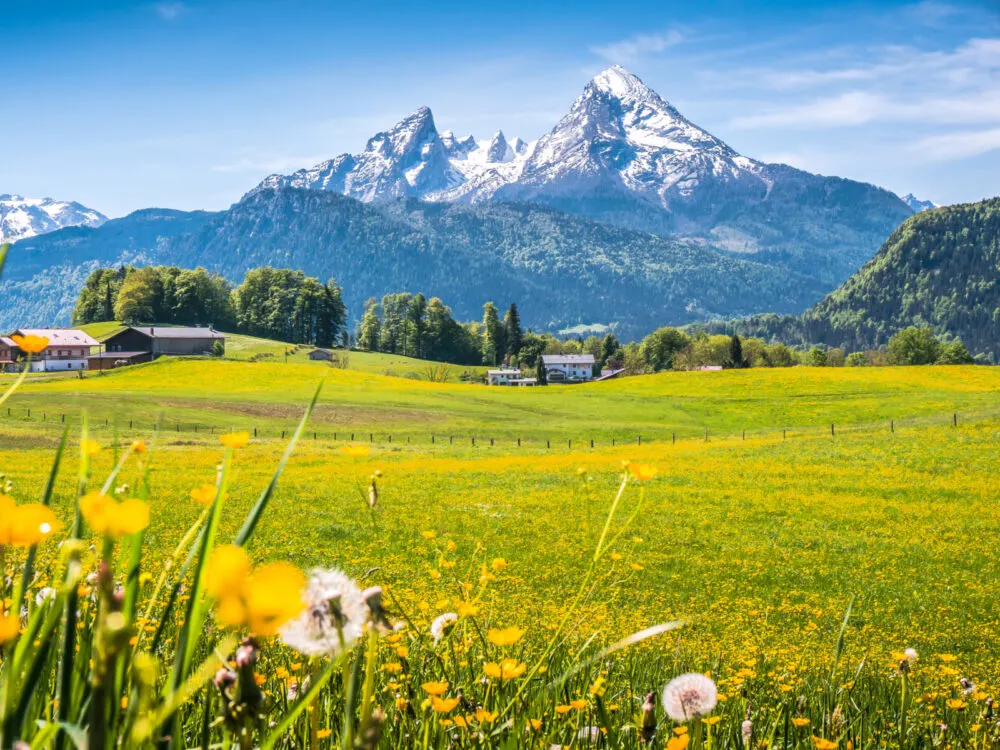
Canadastock/Shutterstock
The cheapest time to visit Germany is January, February, and May (lowest airfare) and July to October (lowest hotel prices). Since you could pay hundreds more in airfare from July to October, you’ll save the most by coming in winter or May.
January, February, and May offer varied weather. If you want to ski, December through March is the skiing season with plenty of snow, especially in southern Germany. Munich gets an average 2.5″–2.8″ of snow per month from December to February, while Berlin sees roughly 1.5 inches in December and January.
May, on the other hand, is warm with highs in the upper 60s, more sunshine hours, and a livelier atmosphere, but there’s a week-plus of rain throughout the month. It’s still nice hiking and sightseeing weather:
- January: 38–42°F; 7–9 rainy/snowy days
- February: 40–44°F; 6–8 rainy/snowy days
- May: 63–67°F; 7–13 rainy days
Berlin is always on the drier side, so it’s a great city to visit in May with roughly 7 rainy days instead of 13. Hamburg is also relatively dry in May, plus you’ll be able to check out the annual Hafengeburtstag city birthday celebration this month.
While airfare is what makes these months cheaper for a visit, the prices of hotel rooms aren’t crazy-expensive this time of year. You’ll find the best hotel + airfare combination deals in May, which is the cheapest month to visit Germany overall.
Take a look at the Google Hotels and Skyscanner airfare data for these months:
- January: $183/night; $371+ airfare
- February: $229/night; $373+ airfare
- May: $174/night; $333+ airfare
While hotels are cheaper between July and October (except September) at $152–$168/night on average, you’ll pay a lot more for airfare — so they’re not the cheapest months to visit Germany. You’ll pay around $493 for the cheapest round-trip flights between July and October, but the overall airfare average is just $359 in January–February and May.
You’ll find so much to do during any of these months. January and February are two of the least busy months in Germany because it’s the dead of winter.
Days are short, sunshine is limited, rain and snow is falling, and temperatures are cold — but it’s perfect for checking out the famous Christmas light shows (through January) around the country, skiing, and enjoying winter wonderland landscapes in the mountains and snowy forests.
Winter is a fine time to chow down on hearty German classics, like soft pretzels, German goulash, potato pancakes, and sauerkraut with meaty pork hocks, while you’re here. May is ideal for grabbing tasty treats on the street, grilled bratwurst, and German potato salad.
Come May, you’ll be able to explore Germany’s mountains and hiking trails, enjoy city strolls and sightseeing in historic Berlin, Munich, Hamburg, and Cologne with warm temperatures, attend springtime festivals and outdoor events, and dine al fresco at trendy eateries and cafes.
Here are some of the events you can look forward to in January, February, and May across Germany each year:
- Berlin Christmas Garden (Dec–Jan) illuminates Berlin’s Botanic Garden with twinkling Christmas lights, music, and winter plants along an enchanted walking path through January
- CTM Festival (late Jan–Feb) brings electronic music and other genres played by local artists in Berlin for a 10-day celebration of “adventurous music and art”
- Fastnacht/Carnival (Feb) is a pre-Lent festival like Mardi Gras with floats, masked participants, drinking, food, and parades across southern Germany — the biggest celebrations are in Munich and Cologne
- Berlinale Film Festival (Feb) draws filmmakers, fans, and critics to Berlin with 400+ films showcased from short to full-length cinema at one of the world’s biggest film fests
- Spargelfest (Apr–Jun) are asparagus festivals, held all around Germany (especially in Schwetzingen) to welcome springtime and the harvest of this popular veggie with costume contests, asparagus-themed snacks and dishes, concerts, and games
- Rhein in Flammen/Rhine in Flames (May–Sept) in Bonn, Koblanz, and other towns along the Rhine River shoot fireworks as illuminated boats sail down the river after dark with concerts, wine and beer, food, and dancing held onshore
- Hafengeburtstag (May) celebrates the city of Hamburg’s birthday with a traditional fair, live music performances, boat shows, food booths, and fireworks
Overall, January and February are great for skiing and great prices, but May is the best time to visit Germany for a combination of cheap prices on airfare and hotels with manageable crowds, nice weather, and plenty of festivals and things to do.
Least Busy Time to Visit Germany
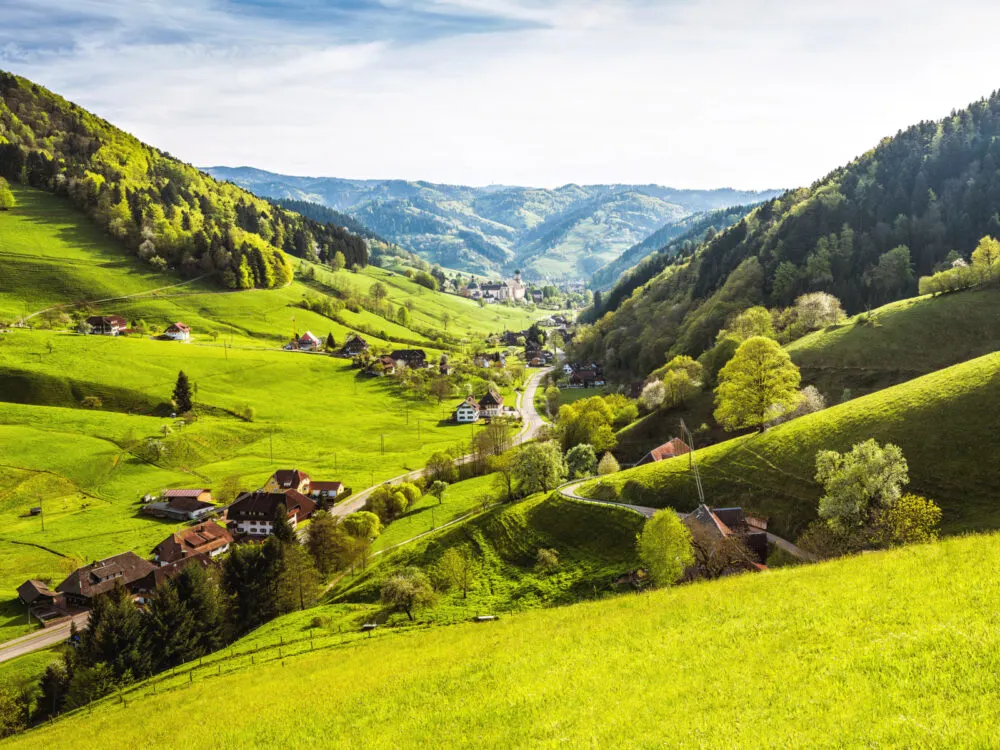
Funny Solution Studio/Shutterstock
The least busy time to visit Germany is between January and April, when tourism slows down as the weather moves through cold, snowy winter to mild springtime with moderate rain.
If you’re looking for the season with the fewest crowds in Germany, you’ll want to plan your travel dates between January and April. The upside: Hotels, flights, and restaurants are wide-open for booking, lines at attractions are short, and it’s not the wettest time of the year.
The downside: Hotel prices are higher in cold, snowy January and February, March is chilly with the highest flight prices and sees a few more visitors, and April has up to 10 rainy days in the month.
- January: 38–42°F; 7–9 rainy/snowy days
- February: 40–44°F; 6–8 rainy/snowy days
- March: 46–51°F; 6–9 rainy/snowy days
- April: 56–59°F; 5–10 rainy/snowy days
While Berlin offers a nice reprieve from the heavier snow and rain in other parts of Germany during this time of year, it’s going to be more crowded than some of the smaller cities and towns — but still less so than during the peak May–September season.
As far as trip costs go, this can be a good time to visit. January and February have higher hotel prices (see Google Hotels data below) but moderate airfare averages. March sees the highest average airfare, but lower hotel rates. April is somewhere in the middle.
- January: $183/night
- February: $229/night
- March: $178/night
- April: $195/night
January, February, and April see fewer visitors than March, which sees a brief uptick with Spring Break and the popular springtime festivals around Germany (we’ll look at some of those below).
We like this time of year for skiing in the Arber, Allgäuis, Steinplatte, and Waidring regions in January and February, sightseeing in Berlin, Dresden, and Leipzig with cool weather in March, or enjoying hikes and charming villages (like Freiburg) in the Black Forest and the Rhine Valley for vineyards, castles, and scenery in April.
Some of our favorite places to visit during these months are the 19th-century Neuschwanstein Castle in the Bavarian Alps (inspired the Disney Sleeping Beauty castle), visit Lake Königssee to kayak and sail in April, and explore Nuremberg’s fairytale medieval castle and arched Henkersteg Bridge.
There’s no shortage of things to do between January and April, either. We’ve listed some of the annual festivals and events for January and February above under the Cheapest Time to Visit Germany, but here’s what’s happening from March to April:
- Frühlingsfest/Spring Festival (Mar) rings in the springtime in Nürnberg with carnival rides, costumed parades, food and drink booths, and concerts at Luitpoldhain Park
- Mandelbluetenfest/Almond Blossom Festival (Mar) in Germany’s Palatinate wine region kicks off wine and almond season with regional wine tastings, cheeses, almond goodies, and bursts of green and sunshine as the almond trees bloom
- Walpurgisnacht/Walpurgis Night (late Apr) brings torch-bearing partygoers to the top of Heidelberg Mountain at the Thingstätte ruins to light massive bonfires, eat, drink, and pay homage to this old saint’s day
- Stuttgart Frühlingsfest (late Apr) features thrill rides, music, competitions, food and beer booths, and family events with a fireworks display on the final day
- Spargelfest (Apr–Jun) are asparagus festivals, held all around Germany (especially in Schwetzingen) to welcome springtime and the harvest of this popular veggie with costume contests, asparagus-themed snacks and dishes, concerts, and games
With annual lows in tourism numbers across Germany, you’ll appreciate the quiet months of January through April as long as you know what to expect from the weather and prices on hotels/airfare when you visit.
Worst Time to Visit Germany
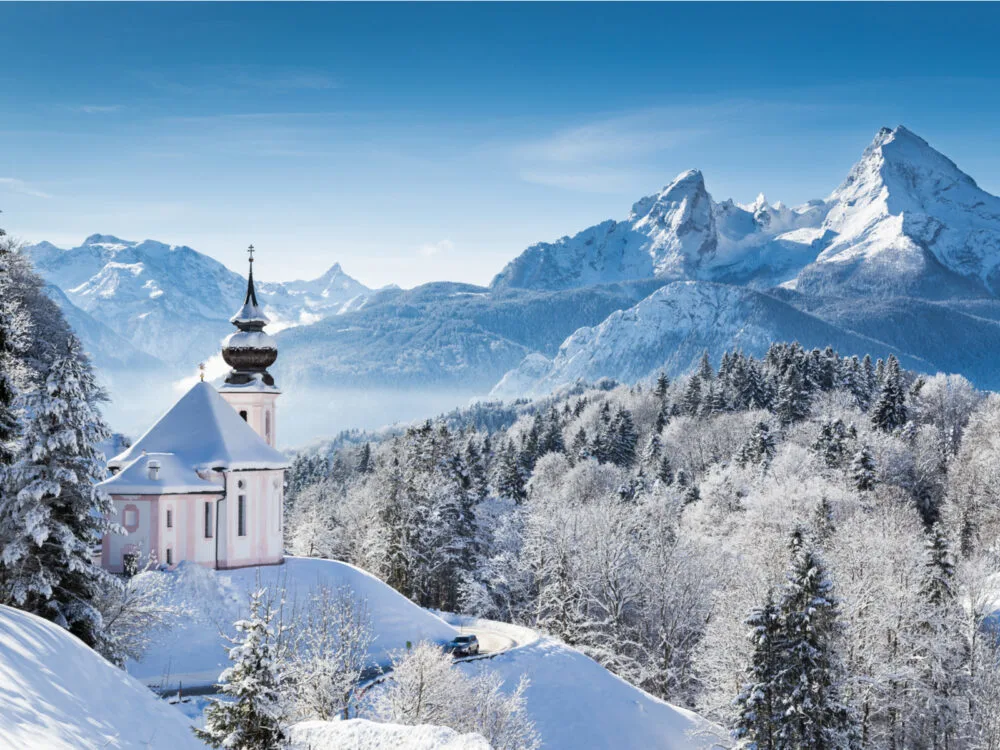
Canadastock/Shutterstock
If we had to pinpoint the worst time to visit Germany, it would be June–July and November–December. June and July are the wettest months of the year. November is gloomy post-fall foliage and December is cold and crowded with Christmas tourism.
But Germany is a year-round destination — when it’s snowy and cold, you can ski and enjoy cozy mountain resorts. When it’s warm, there are beaches, urban sightseeing, and outdoor recreation to occupy you in between rain showers.
When it’s cool in fall, you’ve got colorful foliage and the year’s best festivals to look forward to. But November is when most of that autumn beauty has shorn itself from the trees, leaving bare sticks, snow, and gray skies that give Germany a gloomy atmosphere.
By December, Germany has transformed into a Christmas wonderland with holiday markets, bustling ski resorts, and lots of themed festivals and events — but it’s crowded and expensive (hotels and airfare).
June and July are closer to being nice months to visit Germany, but they’ve got some problems, too.
You’ll deal with up to 14 rainy days each month, water temperatures aren’t warm enough for enjoyable swims until late July, crowds are bigger as the warmer summer weather takes hold, and hotel and flight prices are some of the highest of the year as a result.
- June: 68–71°F; 8–14 rainy days
- July: 72–76°F; 8–14 rainy days
- November: 45–49°F; 6–9 rainy/snowy days
- December: 38–43°F; 8–10 rainy/snowy days
While you’ll be able to score great deals on hotel rooms in Germany during rainy July (around $160/night, as we discovered in Google Hotels data below), June, November, and December are more expensive and flight prices aren’t much better.
- June: $215/night; $466+ airfare
- July: $160/night; $520+ airfare
- November: $206/night; $403+ airfare
- December: $237/night; $557+ airfare
With the highest hotel rates and airfare averages of the year, December is far from affordable. Shoulder-to-shoulder crowds can be expected in the cities with the biggest Christmas markets and festivals.
All is not lost if you find yourself traveling to Germany during these months, though. The warm conditions of June and July can be rainy, but Berlin is drier and rains do subside for enjoying hiking, lake and sea water sports, and park visits.
The very festivals that draw bigger crowds in November and December are also spectacular and well worth visiting. You’ve got to see the 590-year running Dresden Striezelmarkt with 200+ vendors or the 100+ markets around Berlin, from Breitscheidplatz Christmas Market to Berlin City Hall’s market with rides, ice skating, and a taste of Old Berlin.
Here are some of the best events and festivals that take place around Germany in June–July and November–December:
- Fusion Festival (Jun) in Neustrelitz, just north of Berlin, is similar to Burning Man with its no-rules atmosphere and nonstop music acts performing with art installations at this former airfield
- Berlin Pride/Christopher Street Day (Jul) memorializes the Stonewall Riots for gay rights in West Berlin with colorful flags, food, music, dancing, and parades
- Christmas markets (Nov–Dec) set up for a month leading up to Christmas with handcrafted goods, holiday decor, themed food and drinks, and fun activities for families; the best are Berlin’s at Charlottenburg Palace, Nuremburg’s Christkindlesmarkt in the Old Town Hauptmarkt, and Munich’s on Marienplatz Square
There are better months to visit Germany, but don’t worry if your travel dates only allow for a trip in June, July, November, or December. You’ll still be able to experience the history, natural beauty, and liveliness of the country — but you might pay more or deal with lots of rain.
Things to Consider
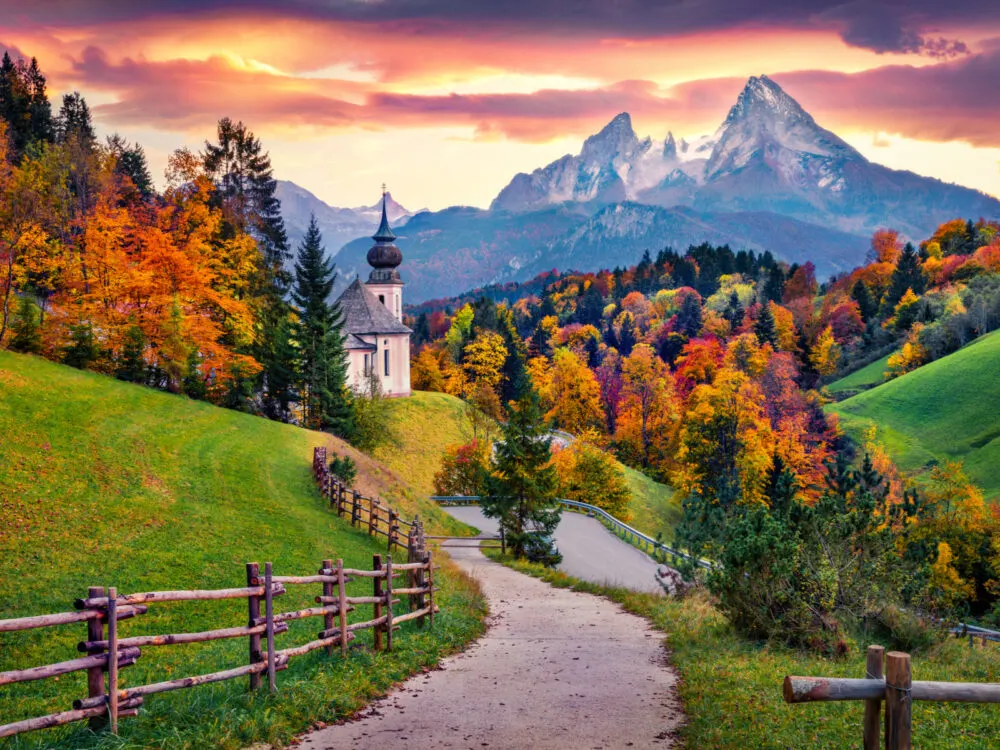
Andrew Mayovskyy/Shutterstock
What else should you know before making your merry way to Germany? Here are some helpful travel tips to make your visit perfekt glatt (perfectly smooth):
- Learn some German words. The German language is challenging to learn, but you can learn some key phrases and words to make communication easier. Most Germans don’t speak English, and signs, menus, and notices are all displayed in German language. Your phone can help you decipher a lot, but it’s best to know a few words and phrases by heart.
- Come up with a realistic itinerary. It’s tempting to pack as much as possible into your trip to Germany, but a realistic plan is better. Try not to spread yourself too thin with sightseeing or make yourself travel long distances each day to reach new destinations — find a few places of interest clustered around your “home base” and keep your travel circle small to enjoy a more relaxing trip.
- Cash is king here. You’ll want to convert your dollars to euros once you arrive and keep cash on you while you’re out and about. Cash is king in Germany, and many shops and restaurants don’t accept debit or credit cards. Don’t take a chance — carry cash or find ATMs near your hotel so you can always have plenty of cash on hand.
- Explore off the beaten path. Germany’s glittering cities are the main attraction, but don’t neglect the smaller and lesser-known towns in the countryside. Places like medieval Meersburg, the lush Rhine Valley, and Bavarian villages in the Black Forest deserve your attention with old castles, charming half-timbered houses, rolling hills and mountains, and awesome hiking trails and lakes.
- Don’t expect perfection. Even the best time to visit Germany is going to have some days with poor weather. Less-busy periods can feature big festivals that unexpectedly bring a sudden influx of tourists, and cheap seasons can see quick price surges if the weather is unseasonably warm or hotels book up faster than expected. Expect the unexpected and you’ll be able to enjoy your trip without worrying too much.
Frequently Asked Questions
Still have some lingering questions about the best time to visit Germany? We’ve got you covered with a list of travelers’ most common questions and their answers below.
What is the best month to visit Germany?
September is the best month to visit Germany overall, bringing daily highs that still feel like summer around 64--67°F with 6--10 rainy days during the month -- perfect for hiking and sightseeing. The biggest cultural festivals start this month, like Beethovenfest in Bonn, Reeperbahn Festival in Hamburg, and the famous Oktoberfest in Munich and cities around the country.
What is the cheapest time to go to Germany?
January, February, and May are the cheapest times to go to Germany, but May is the cheapest month of all. With the lowest airfare prices of the year (flights starting at $333 round trip) and some of the lowest average hotel rates ($174/night), you can save big by visiting in May. January and February also boast great deals on airfare, but higher prices on hotels.
How many days do you need for Germany?
You need at least 7-10 days to explore Germany and give its many destinations and points of interest the attention they deserve. If you’re doing a country-wide tour, plan on 10-14 days. If you’ll be focusing your visit to one city or region, 7-10 days should be plenty to do some sightseeing, eat German cuisine, hike and take outdoor adventures, and check out a festival or two.
What is the rainy season in Germany?
May to August is the rainy season in Germany, with some parts of the country seeing as many as 14-15 rainy days each month at the peak of the wet period in June and July. Berlin is drier than other parts of Germany during the rainy season, making it a great place to visit if you’re coming between May and August.
What months are hot in Germany?
The months of July and August are the hottest in Germany, but daily highs range from 74°F to 79°F in different regions during these months -- more warm than hot. Germany’s climate is generally cool with mild summers and cold winters that make summertime visits pleasant for sightseeing and outdoor activities.
So, What’s the Best Time to Visit Germany?
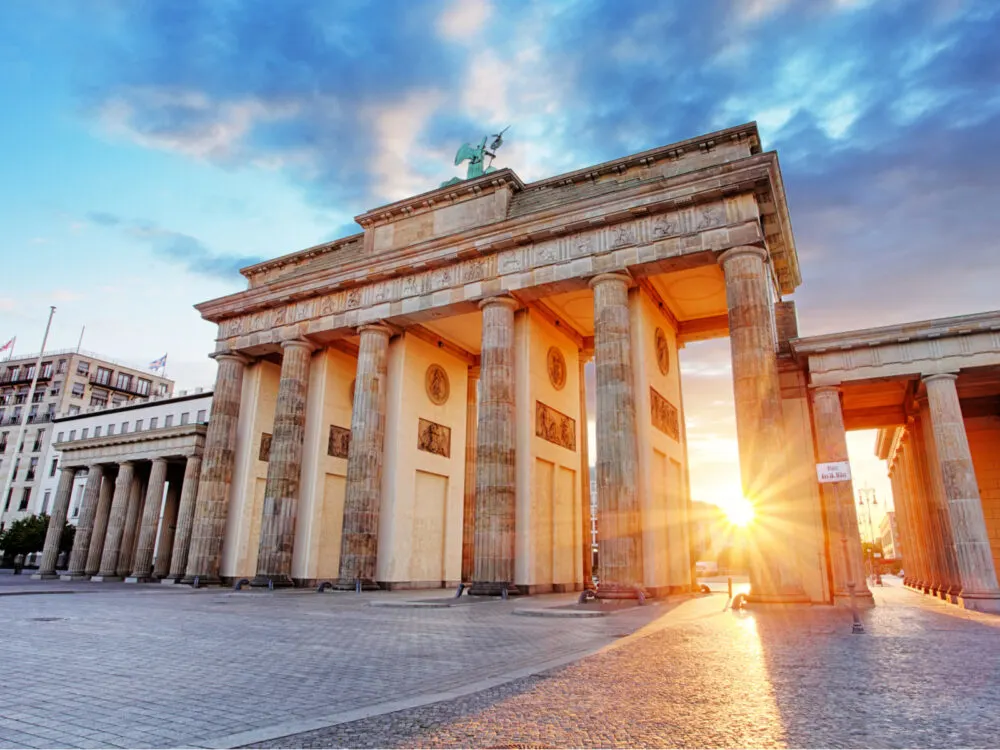
TTstudio/Shutterstock
The best time to visit Germany is between August and October — you’ll catch some of the warmest weather transforming into mild fall with gorgeous foliage highlighting the forests, hills, and mountains with warm color. Prices are affordable, crowds are minimal after August, and it’s our favorite time to explore Germany.
You’ll save money if you visit during January–February or May (especially May, which boasts the lowest average hotel and airfare prices). January and February are cold and snowy with short daylight hours, so most people prefer May, even though it can be rainy.
Germany is least busy from January to April, but there’s a brief uptick in tourism in March (Spring Break and festivals). June, July, November, and December are the worst months to visit because of heavy rain, bigger crowds, and higher prices on hotels and airfare.
With so much rich history, stunning Gothic and Baroque architecture, fairytale forests with quaint alpine villages, and modern cities to explore, the truth is that you can’t go wrong visiting Germany anytime of year. But you’ll be glad you found the best time to visit when you’re there enjoying warm weather and beautiful scenery in the fall!



